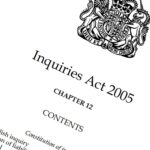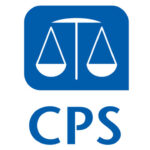There are three main reasons why police resort in using force tactics. The primary reason is for the police officers’ own protection, as when the victim/accused poses a threat or danger to the former. Secondary to this is protection to other officers (which includes protection to the public and the victim) while assistance in making the arrest rounds up the main reasons why police employ the use of force tactics.
Aside from the main reasons in using force tactics, there are also ‘impact factors’ which contributed to the same. As reported, these are some of the common impact factors when the police use force tactics:
- When the person arrested shows resistance and is under the influence of alcohol and/or illegal drugs
- When the person being arrested and is showing resistance has a built of great physical strength
- When the person subject of arrest is in possession of a weapon
What are the force tactics usually used by police forces?
- Restraint tactics – this usually involves the use of handcuffs. It can also be restraint in body or limb, or when the police uses restraint while tackling the victim/accused to the ground
- Unarmed skills – includes distraction strikes in the hands and feet, and in the pressure point and joint locks
- Less lethal weapons – this includes Tasers and AEP’s (Attenuating Energy Projectile), to name a few. It will still be considered even if only used but not discharged
- Firearms – refers to the use of conventional firearms such as guns. It will also be considered even if it is merely aimed and not fired
- Use of other equipment – includes the use of the following, but is not limited to: batons, irritant sprays and shields
*Note: Police officers who deploy any of the tactics mentioned above must report the details of their own use of force.
How force tactics are used in actual settings
According to data provided by the Home Office of Gov.UK, which is a public information website of the United Kingdom, in the year ending 31 March 2020, there were 492,000 recorded incidents in which a police officer used force.
Of the recorded incidents mentioned above, restraint tactics were the most common form of force used, which accounts to 385,000 (78%) of the incidents recorded. The most common reason given by police officers as to the necessity of use of force is to protect themselves.
The most common impact factor for the use of force is the person being under the influence of alcohol, which leads to the person being arrested.
With regards to the characteristics, majority were perceived as male by the police officers which takes up 83% of the 492,000 recorded incidents. More than half of the recorded incidents were perceived by the officers to be between the ages of 18-34 years. A total of 341,000 individuals were white in color and majority of them has no physical or mental health conditions.
*Note: The statistics used above cover incidents in England and Wales between 1 April 2019 and 31 March 2020. Data were collected from the 43 Home Office funded police forces in England and Wales.
An incident where the police used excessive force tactics
In an article published last 30 July 2021 by the UK Corrupt Police (UKCP), footage (Channel 4 News, 2020) of a MET officer who was seen kneeling on the neck of a 48 year old man was captured on a mobile phone and shared widely on social media. It appears that the arrest stemmed from reports that a white man has been beaten up by two black men and apparently, the victim matched the description of one of the suspects. The IOPC concluded that the officer had a misconduct case to answer as his use of force may have been unnecessary and excessive. The IOPC also found that it is appropriate for the officer to take reflective practice to learn from the incident and to prevent any issues from reoccurring rather than face severe sanctions.
An incident where the police used reasonable force tactics
Last June 23, 2021, the UK Corrupt Police (UKCP) released an article entitled “Andrew Hall inquest: Police used ‘justified’ force on man who died”. On the morning of 13 September 2016, police were sent to arrest the victim after the latter allegedly slapped a nurse in a hospital where he is getting his treatment. When he was taken into custody, a “violent struggle” ensued with a number of officers attempting to restrain the victim. The incident was captured on CCTV which showed up to 6 officers delivering punches and knee strikes to the victim. The jury later found that he died from a complex series of causes which included his heart disease, drug intoxication and “exertion against subsequent restraint”.
Conclusion
As a final point, the use of force tactics is reasonable when it is necessary to achieve a legitimate purpose (for instance, in effecting an arrest). All available information must be taken into account, proportionate to the circumstances making the force necessary and only the minimum force required, as perceived by the officer at the time.
On the other hand, the use of force is excessive when there is a continued use of force when the objective/purpose has already been achieved, or once the person has become compliant, under control and no longer a threat.
This article was prepared by the Association Against Abuse of Police Powers and Privileges (AAAPPP), a UK not-for-profit organisation specializing in assisting victims of abuse of power and corruption in the UK Police.






Good day I am so delighted I found your blog page, I really found you by mistake, while I was searching on Aol for something else, Anyhow I am here now and would just like to say thanks a lot for a marvelous post and a all round thrilling blog (I also love the theme/design), I don’t have time to look over it all at the moment but I have bookmarked it and also included your RSS feeds, so when I have time I will be back to read a great deal more, Please do keep up the great job.
I’m not sure where you are getting your info, but great topic. I needs to spend some time learning much more or understanding more. Thanks for excellent information I was looking for this information for my mission.
In the great scheme of things you’ll receive a B+ for effort. Exactly where you misplaced us was first in the specifics. As they say, details make or break the argument.. And that could not be more accurate right here. Having said that, let me inform you what exactly did give good results. Your authoring is definitely incredibly engaging which is possibly the reason why I am taking an effort to comment. I do not really make it a regular habit of doing that. Next, whilst I can certainly see a leaps in reason you come up with, I am not really convinced of how you appear to connect the ideas which produce your conclusion. For now I will subscribe to your position however wish in the near future you link the facts much better.
A powerful share, I just given this onto a colleague who was doing slightly evaluation on this. And he in fact bought me breakfast as a result of I found it for him.. smile. So let me reword that: Thnx for the deal with! However yeah Thnkx for spending the time to debate this, I really feel strongly about it and love studying more on this topic. If possible, as you develop into experience, would you mind updating your blog with extra particulars? It is highly helpful for me. Large thumb up for this weblog publish!
Perfectly indited content, thank you for entropy. “The earth was made round so we would not see too far down the road.” by Karen Blixen.
What i don’t understood is in reality how you are no longer actually a lot more smartly-favored than you may be now. You are so intelligent. You understand thus considerably with regards to this topic, made me individually believe it from so many various angles. Its like men and women aren’t fascinated except it is something to accomplish with Woman gaga! Your own stuffs excellent. Always care for it up!
Very good written story. It will be valuable to anyone who employess it, as well as myself. Keep doing what you are doing – looking forward to more posts.
You have remarked very interesting points! ps nice web site. “To grow mature is to separate more distinctly, to connect more closely.” by Hugo Von Hofmannsthal.
I got good info from your blog
Very interesting subject, regards for putting up.
Great wordpress blog here.. It’s hard to find quality writing like yours these days. I really appreciate people like you! take care
I was looking through some of your blog posts on this site and I think this site is really informative ! Retain putting up.
I got good info from your blog
I think this is one of the most important info for me. And i’m glad reading your article. But want to remark on some general things, The website style is ideal, the articles is really nice : D. Good job, cheers
I saw a lot of website but I believe this one has got something extra in it in it
Great post. I was checking continuously this blog and I am impressed! Extremely helpful information specially the last part 🙂 I care for such information a lot. I was looking for this particular information for a long time. Thank you and good luck.
Some truly wonderful articles on this web site, regards for contribution.
I am glad to be a visitant of this sodding web blog! , appreciate it for this rare information! .
I will immediately grab your rss feed as I can not to find your e-mail subscription link or newsletter service. Do you have any? Please permit me realize in order that I could subscribe. Thanks.
Hey there! I’ve been following your blog for a long time now and finally got the courage to go ahead and give you a shout out from New Caney Tx! Just wanted to say keep up the great work!
Hello there, You have done an incredible job. I will definitely digg it and personally suggest to my friends. I am confident they will be benefited from this web site.
Usually I don’t read article on blogs, but I would like to say that this write-up very forced me to try and do so! Your writing style has been surprised me. Thanks, quite nice article.
I always was concerned in this subject and still am, regards for posting.
I have been absent for some time, but now I remember why I used to love this web site. Thanks , I will try and check back more frequently. How frequently you update your website?
I was examining some of your content on this internet site and I believe this web site is very instructive! Continue putting up.
Really enjoyed this post, can you make it so I receive an email when you write a new article?
I’d should examine with you here. Which is not something I usually do! I enjoy reading a post that will make individuals think. Additionally, thanks for permitting me to remark!
whoah this blog is fantastic i love reading your posts. Keep up the good work! You know, many people are searching around for this information, you can help them greatly.
Hello! I’ve been following your web site for a long time now and finally got the bravery to go ahead and give you a shout out from Kingwood Tx! Just wanted to mention keep up the excellent work!
As soon as I discovered this web site I went on reddit to share some of the love with them.
Exactly what I was looking for, thankyou for posting.
I regard something genuinely interesting about your blog so I bookmarked.
You made some first rate factors there. I seemed on the web for the problem and found most individuals will associate with with your website.
I’m typically to blogging and i really admire your content. The article has really peaks my interest. I’m going to bookmark your site and keep checking for new information.
You’ve been a great aid to me. You’re welcome!
I want to thank you for your assistance and this post. It’s been great.
Please tell me more about this
You’ve been great to me. Thank you!
May I request that you elaborate on that? Your posts have been extremely helpful to me. Thank you!
You’ve been great to me. Thank you!
I want to thank you for your assistance and this post. It’s been great.
Your articles are incredibly helpful to me. Thank you! May I request more information?
Generally I don’t read article on blogs, but I wish to say that this write-up very forced me to try and do it! Your writing style has been amazed me. Thanks, very nice post.
Spot on with this write-up, I truly think this website wants far more consideration. I?ll probably be again to learn far more, thanks for that info.
Can I just say what a relief to find someone who actually knows what theyre talking about on the internet. You definitely know how to bring an issue to light and make it important. More people need to read this and understand this side of the story. I cant believe youre not more popular because you definitely have the gift.
We are a bunch of volunteers and opening a brand new scheme in our community. Your website offered us with helpful information to work on. You have done an impressive job and our entire neighborhood will be grateful to you.
Hello There. I found your blog using msn. This is a very well written article. I will be sure to bookmark it and come back to read more of your useful information. Thanks for the post. I will definitely return.
whoah this blog is magnificent i love reading your articles. Keep up the great work! You know, a lot of people are looking around for this information, you could help them greatly.
I’m so happy to read this. This is the kind of manual that needs to be given and not the accidental misinformation that’s at the other blogs. Appreciate your sharing this best doc.
whoah this blog is wonderful i love reading your articles. Keep up the good work! You know, lots of people are looking around for this information, you could help them greatly.
Thanks for the auspicious writeup. It in fact was once a amusement account it. Look complicated to more delivered agreeable from you! By the way, how could we keep in touch?
Helpful information. Lucky me I found your website by chance, and I am shocked why this twist of fate did not took place earlier! I bookmarked it.
fantastic post, very informative. I wonder why the other experts of this sector don’t notice this. You should continue your writing. I am sure, you have a great readers’ base already!
Wow, marvelous blog format! How lengthy have you been running a blog for? you made running a blog look easy. The entire glance of your website is magnificent, let alone the content material!
I have been absent for some time, but now I remember why I used to love this site. Thank you, I will try and check back more frequently. How frequently you update your web site?
I appreciate, cause I found just what I was looking for. You’ve ended my 4 day long hunt! God Bless you man. Have a nice day. Bye
very good submit, i actually love this website, keep on it
Thanks for the sensible critique. Me and my neighbor were just preparing to do a little research on this. We got a grab a book from our area library but I think I learned more from this post. I am very glad to see such great information being shared freely out there.
Good day very nice blog!! Guy .. Excellent .. Amazing .. I’ll bookmark your web site and take the feeds also?I am glad to seek out so many helpful information right here within the put up, we’d like develop extra techniques on this regard, thanks for sharing. . . . . .